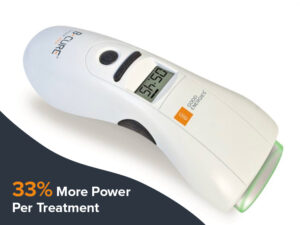Knee Pain
Knee pain causes include tears in ligaments, arthritis, meniscus, inflammation of the kneecap tendon (tendonitis), osteoporosis, and rheumatoid arthritis.
Knee pains are one of the most common types of pain, in fact, 80 percent of those aged 45 and over suffer knee pain.
Knee pain can appear at any age, and not only in the elderly. Knee pain can appear as the result of injury, worn down cartilage, or due to a range of other medical conditions such as mechanical problems, arthritis and infections.
The main function of the knee is bending and straightening of the leg while bearing body weight together with the hips and the ankle. In order to perform all of these movements and support the body, the knee relies on several structures, bones, tendons and cartilages.
The Knee is Formed by 4 Bones that Make Up the Hinge Joint
These 4 bones are the thigh bone (femur), the tibia (shinbone), the fibula, and the kneecap (patella). In addition, the knee has four important ligaments that connect the thighbone to the calf. The anterior cruciate ligament (ACL) and the posterior cruciate ligament (PCL) provide stability. The medial collateral and the lateral collateral are situated along the inner and outer sides of the knee. In the connecting point between the thigh bone and the calf bone there are two disks – menisci – cartilage-like cells, which serve as the knee shock absorbers. These are also known as the medial (inner) and lateral (outer) menisci.
What Are the Causes of Knee Pain?
Pain in the knee can be from several sources – mechanical, trauma, injury or inflammation.
The Kneecap
Dislocation of the kneecap means that the bone has moved out of place.
Trauma
Direct trauma to the knee can damage any of the structural elements, causing tears to one or more of the tendons or the menisci. These types of injuries are especially common in those who engage in sports.
Osteoarthritis – Breakdown of Joint Cartilage
Osteoarthritis is the most common form of joint inflammation, which mainly affects the joints that carry the weight of the body. When it affects the knee joint it is referred to as breakdown of cartilage.
Types of Inflammation
Inflammation types include: rheumatoid arthritis, gout, infected inflammation of the knee and inflammation of the kneecap. Several types of infection can develop in the knee joint causing pain and sometimes damaging tissue in the knee.
Symptoms
Location and severity of knee pain varies in accordance with the cause of the problem. Signs and symptoms that may accompany knee pain:
- Swelling and rigidity
- Redness and warm to the touch
- Weakness or instability
- Popping or cracking sounds
- Inability to straighten the knee
Methods of Treating Knee Pain:
- Physical therapy
- Surgery: arthroscopic surgery or knee replacement
- Knee pain treatment with low-level laser: B-Cure Laser
B-Cure Laser is an effective mode of treatment that may help reduce pain and swelling.
B-Cure Laser provides breakthrough laser therapy, offering the power of some professional lasers as used in clinics, in a lightweight portable device that can be used from the comfort of home.
The treatment is safe, effective and may provide lasting pain relief.
B-Cure Laser’s restorative power is provided by advanced laser technology.
B-Cure Laser should be placed in contact with the skin allowing the photon energy to penetrate the tissues. This stimulates the body to produce adenosine triphosphate otherwise known as ATP, which carries energy within the cells. The ATP interacts with various biomolecules inside the cells promoting normal cell function and enhancing the body’s natural processes.
Patients recover from muscular, skeletal and nerve injuries as cells regenerate faster and function better.
Research has proved that using the B-Cure Laser for painful knee conditions provides cells with more energy to perform their functions.
Therapeutic effects of LLLT (laser phototherapy) include:
- Increased production of ATP (Adenosine Triphosphate)
- Increased cellular metabolism
- Increased collagen production
- Increased enzyme production
- Increased protein synthesis
- Improved blood circulation
- Improved lymphatic flow and drainage
- Reduced inflammation
All this serves to boost the body’s natural healing power, targeting the root causes of pain and providing rapid relief.
B-Cure Laser is unique due to it’s beam that covers a surface of 4.5 cm, making it possible to treat a wide range of painful conditions easily, effectively and quickly.
B-Cure Laser is now available for home use and has been proven clinically effective and safe. The treatment has no known side effects and is a non-invasive method for treating many types of orthopedic conditions.
B-Cure Laser is safe for all ages, and does not require protective eyewear during use.
What Are the Benefits of B-Cure Laser?
- May reduce chronic pain
- Non-invasive and non-surgical treatment
- Suitable for all ages
- No known side effects
- Clinically proven by many studies
- Easy and safe for home use
Professor Reis, Head of several Orthopedic Hospital Departments over the past 30 years, stated:
“According to research carried out, 100 cases were compared between those treated only with physical therapy and patients who received physical therapy and low-laser treatment. In the group that received laser treatment, the need for knee replacement surgery was significantly reduced.”
Each of the 4 main treatment points should be treated for a duration of 8 minutes. Place the device at the soft spots that surround the knee.
- Along the inner side of the knee.
- Along the outer side of the knee.
- At the back of the knee.
- Along the crease at the back of the knee.
Should you feel pain at the front of the knee, the area under the kneecap should be treated.
To make treatment more convenient, the adjustable stand may be used. Stabilize the device and the stand and treat without moving so that the laser beam penetrates deep into the tissues.
For optimal results, repeat the treatment at least twice a day.





